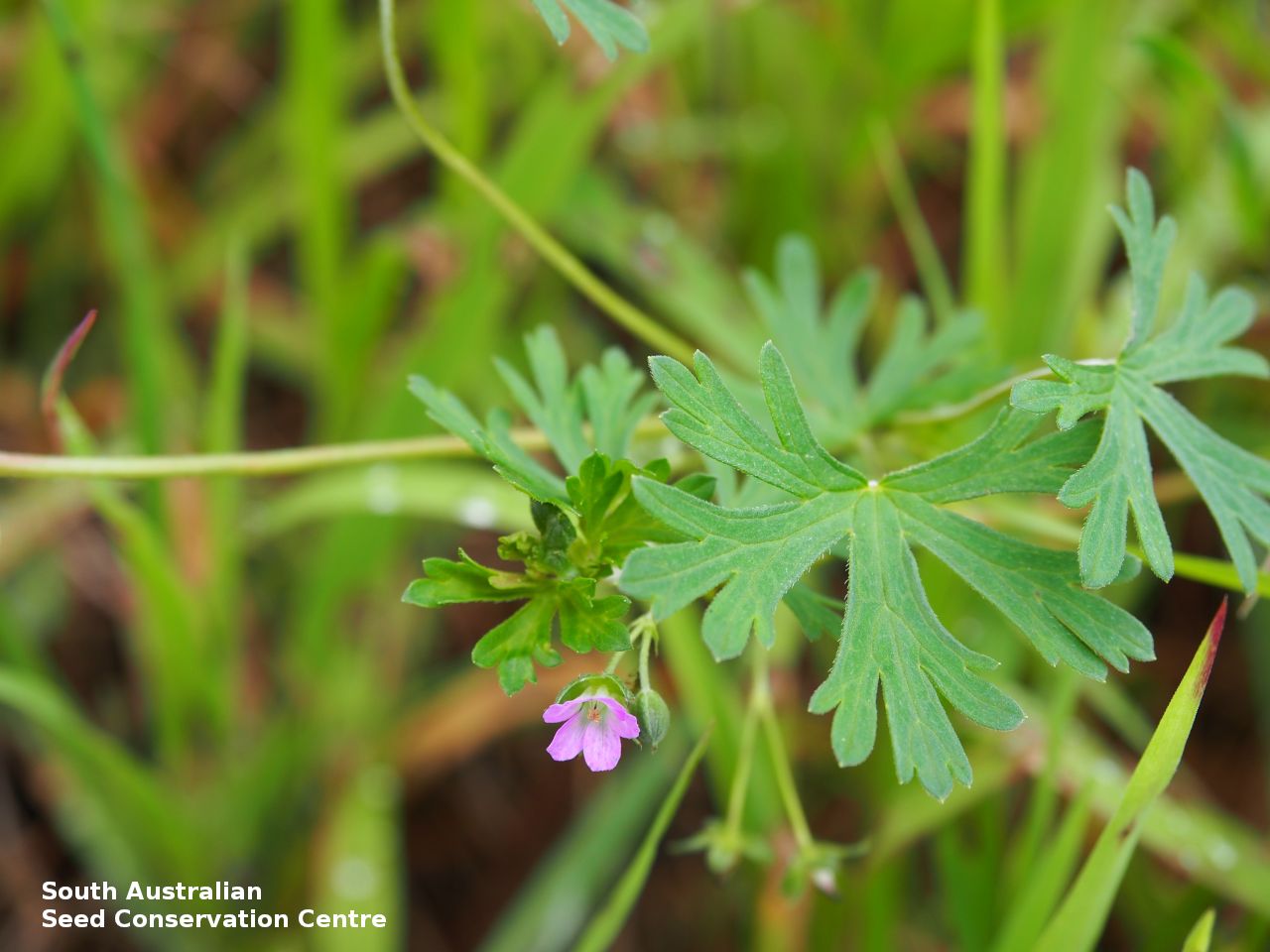
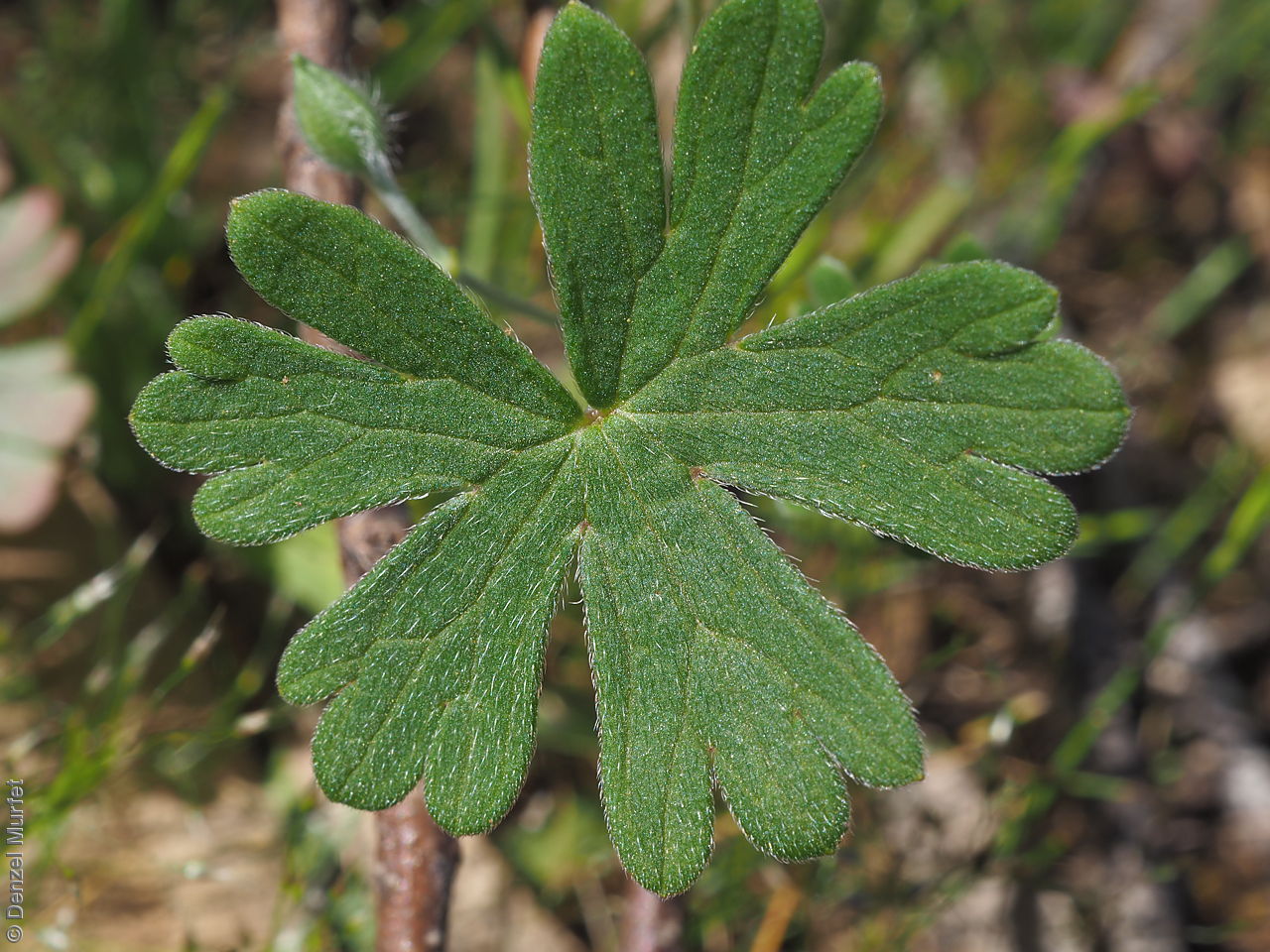
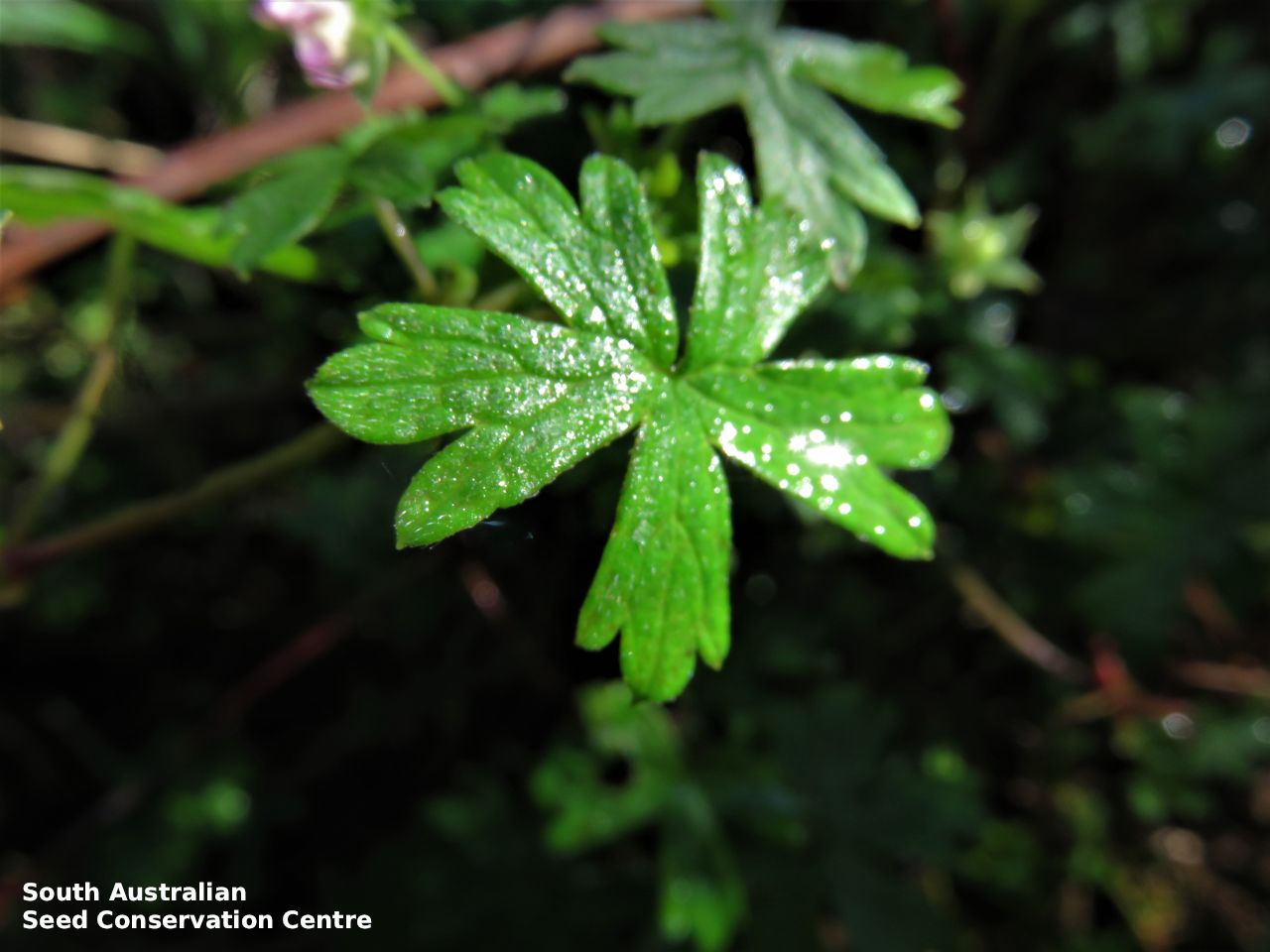

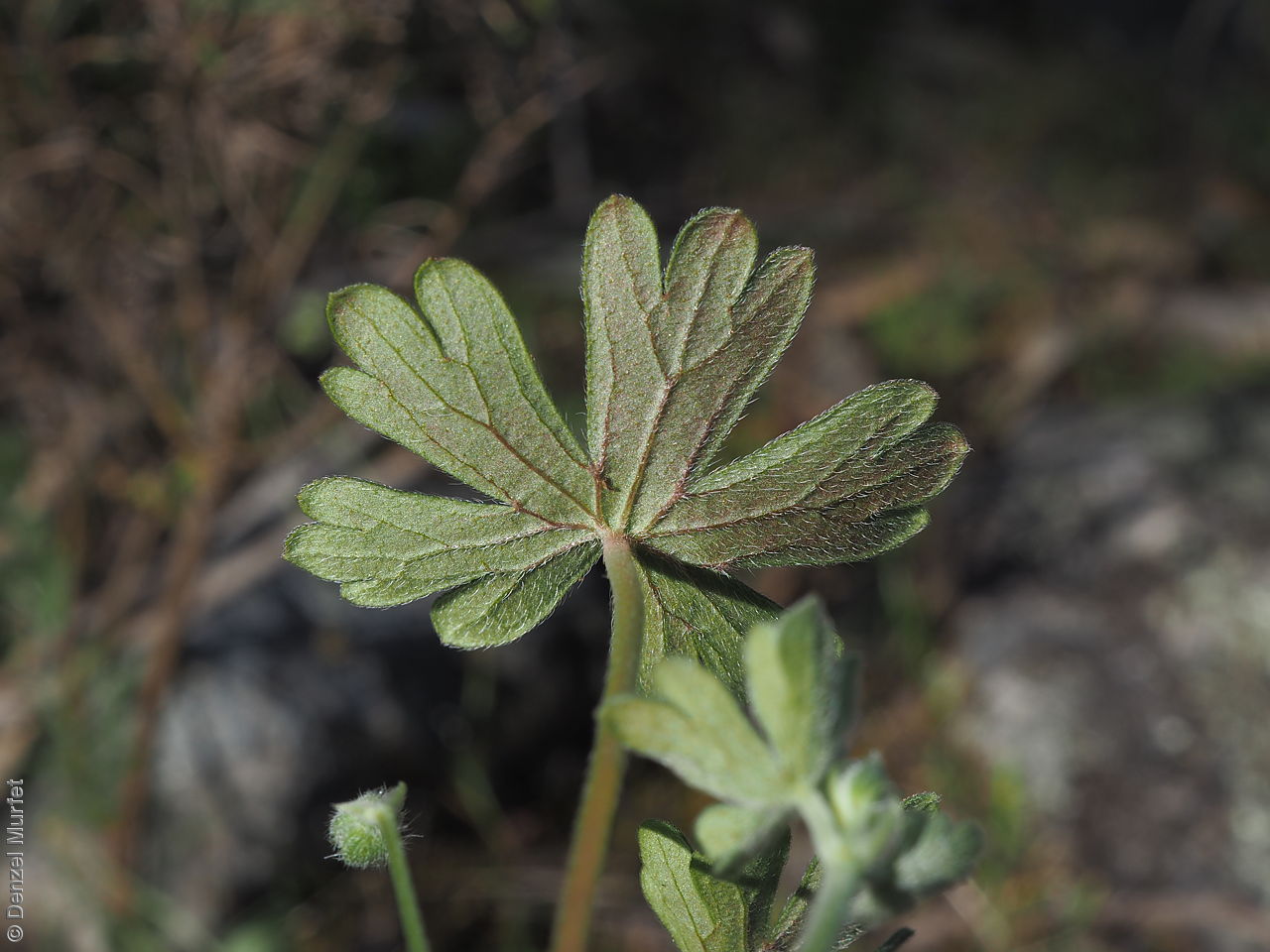
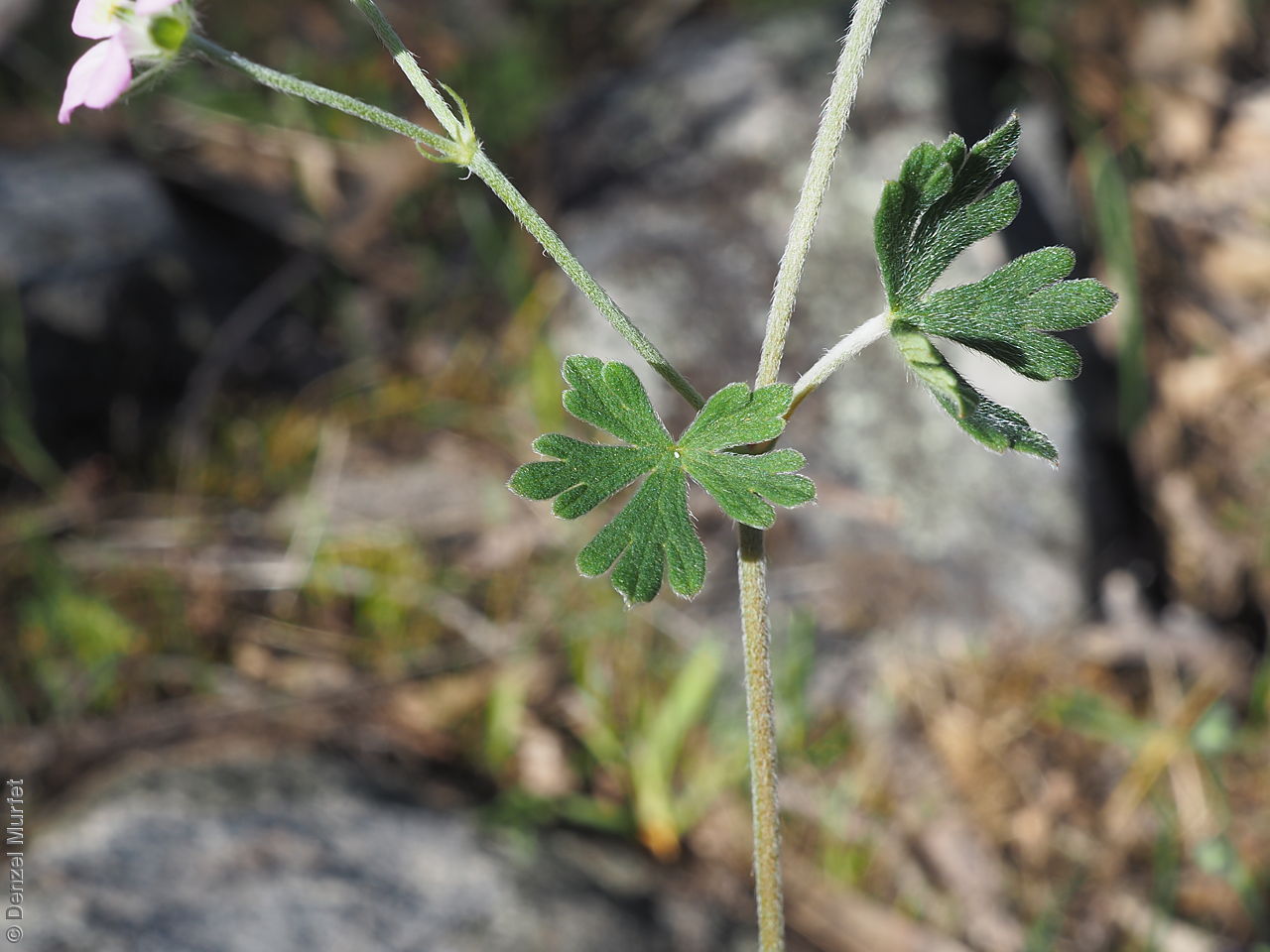
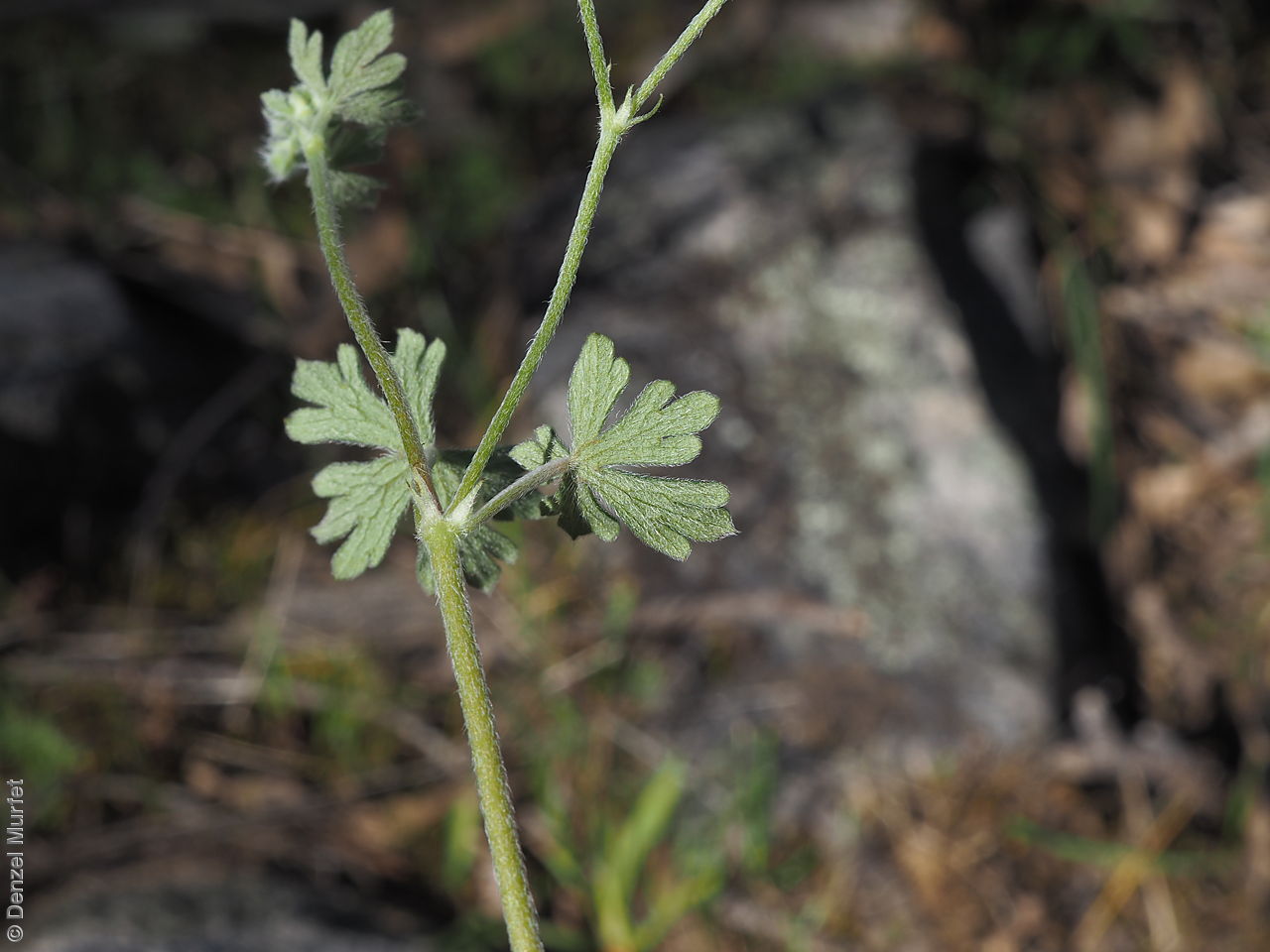
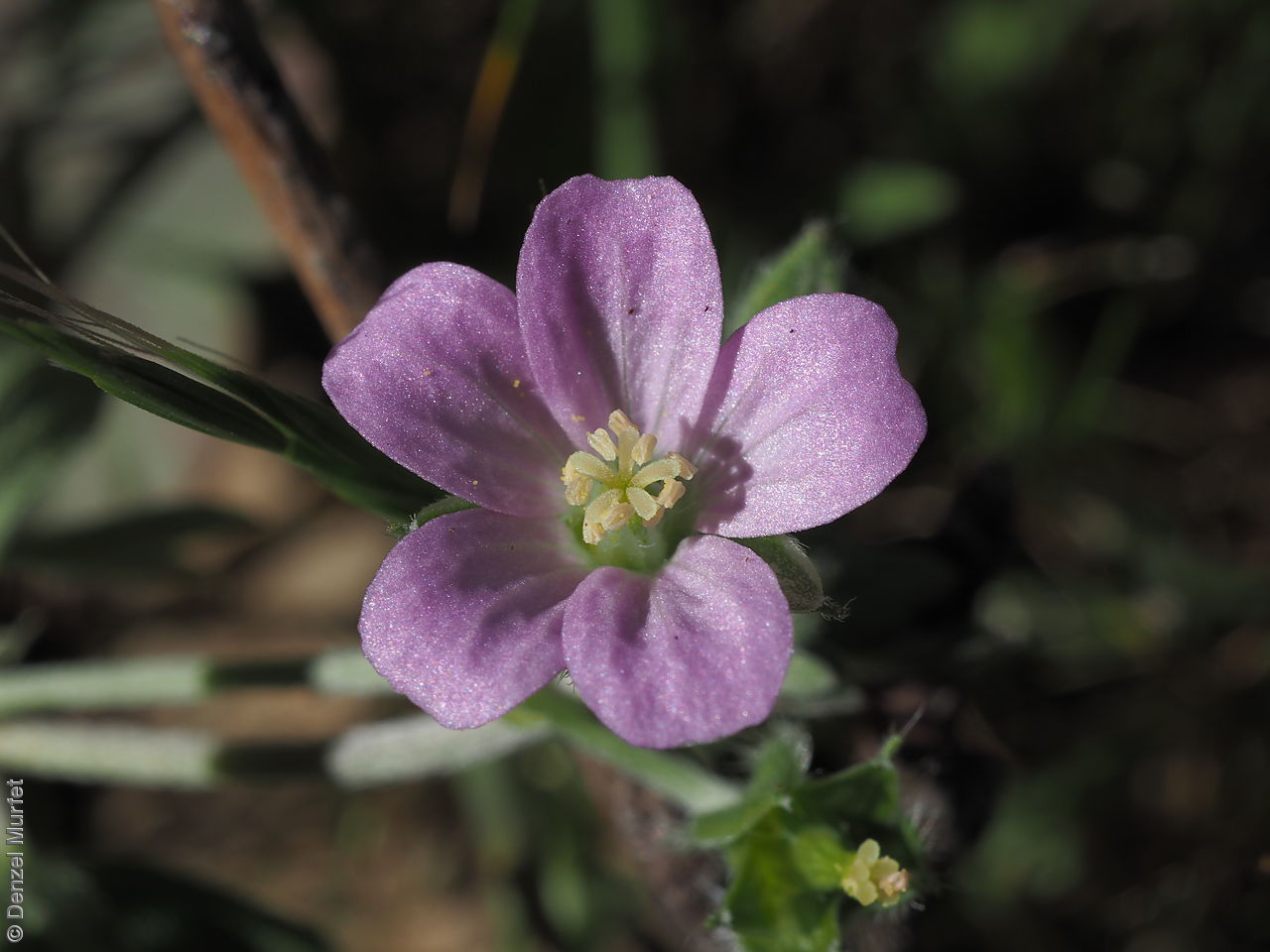
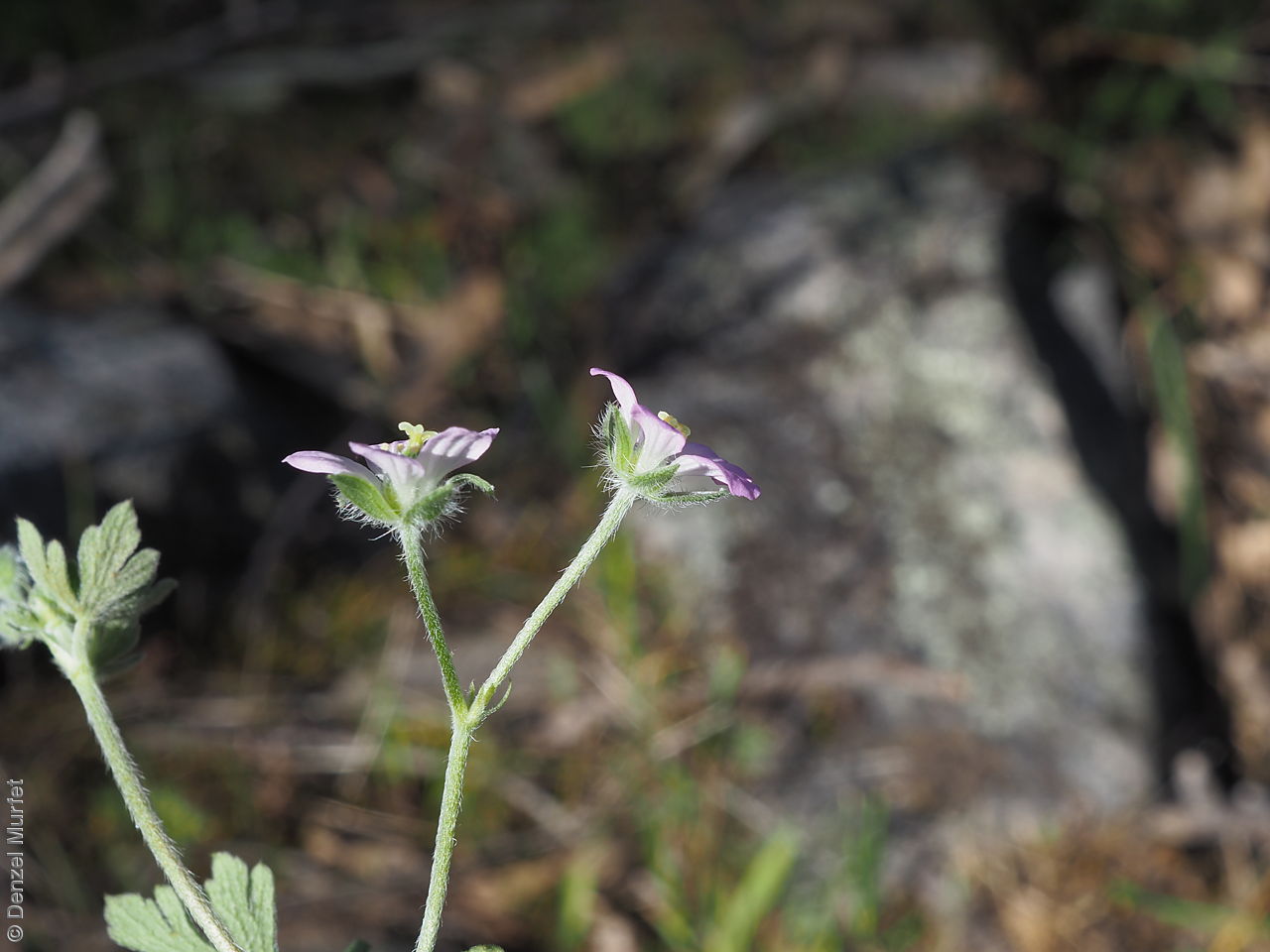

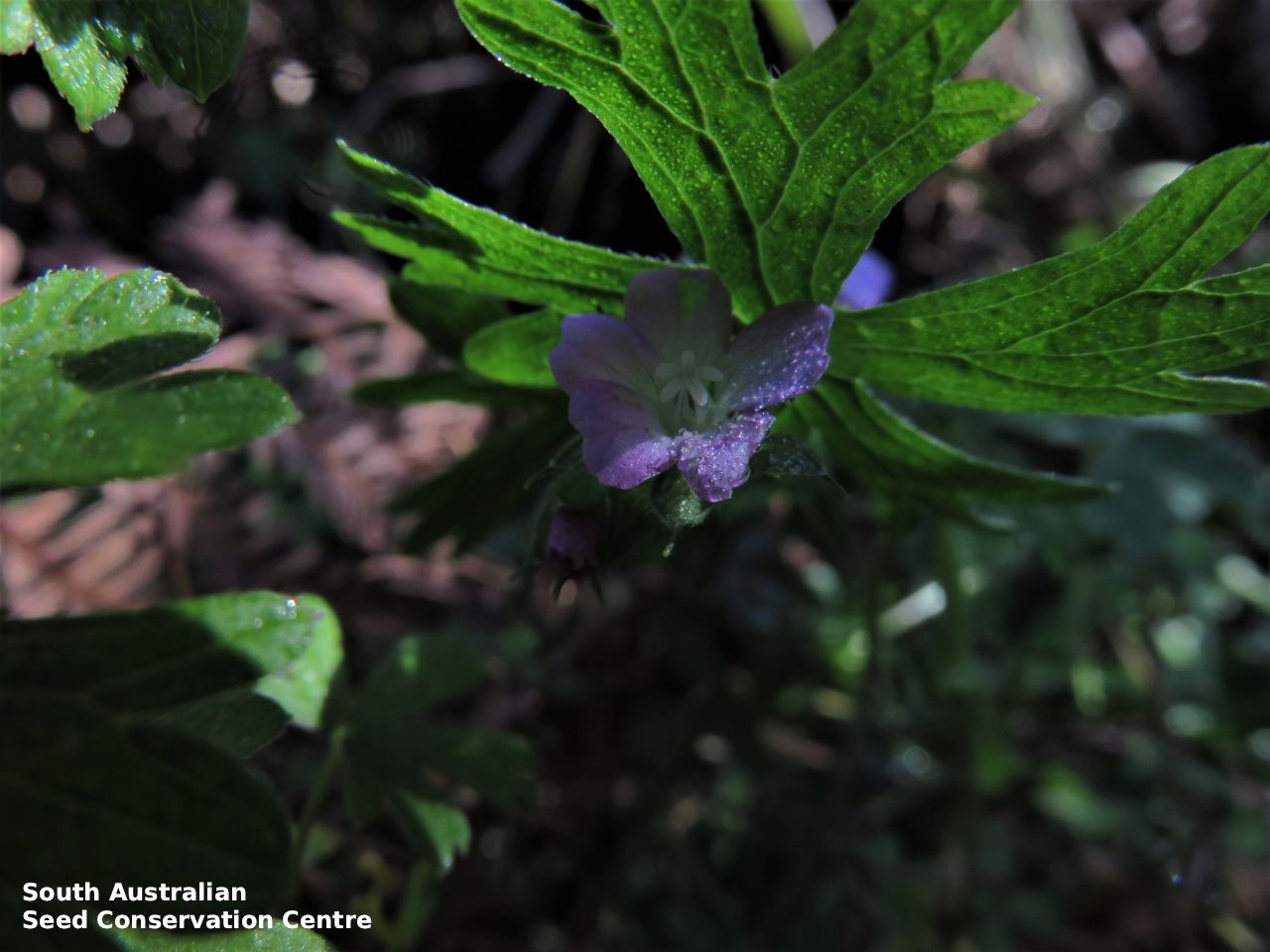
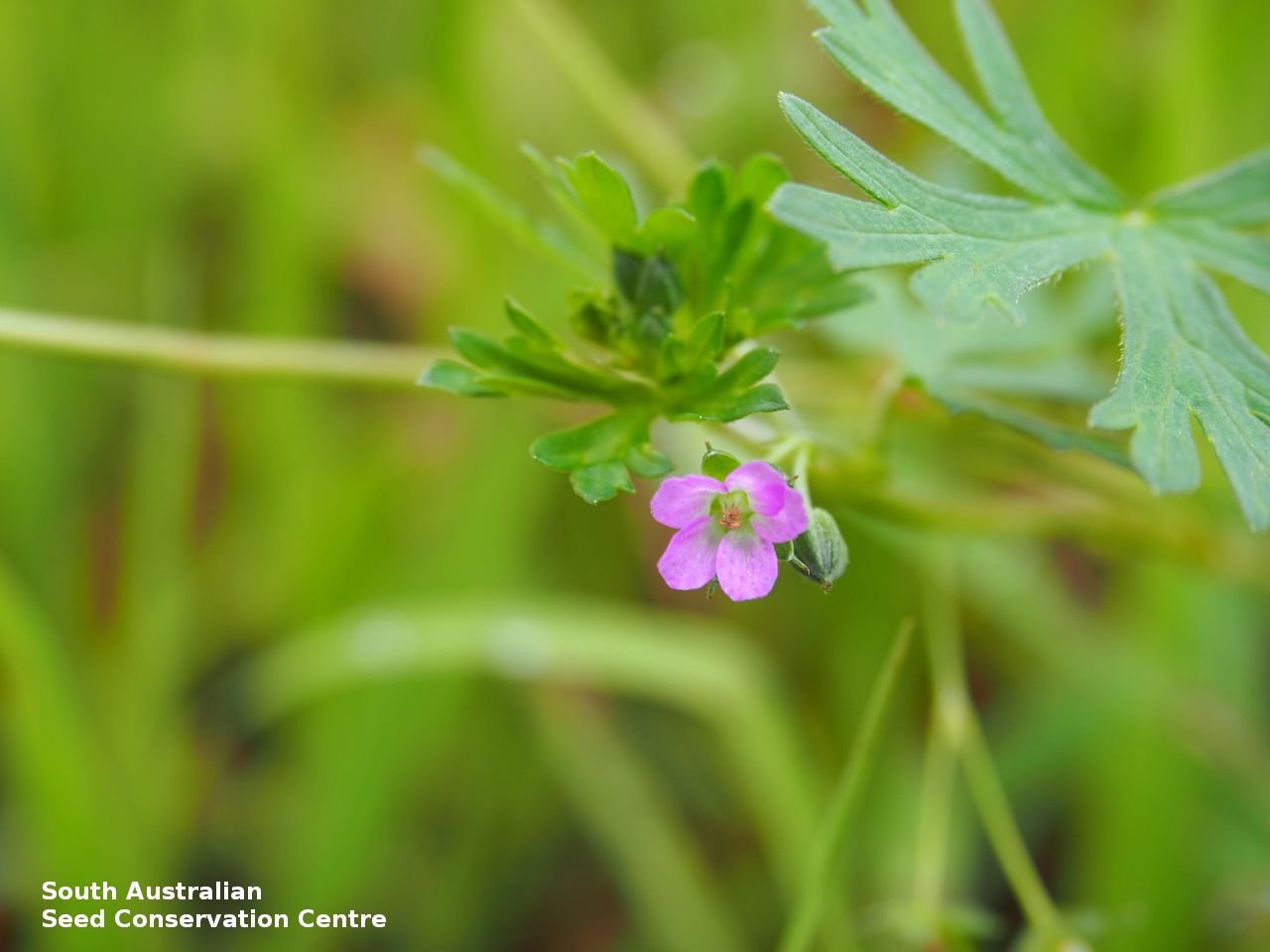
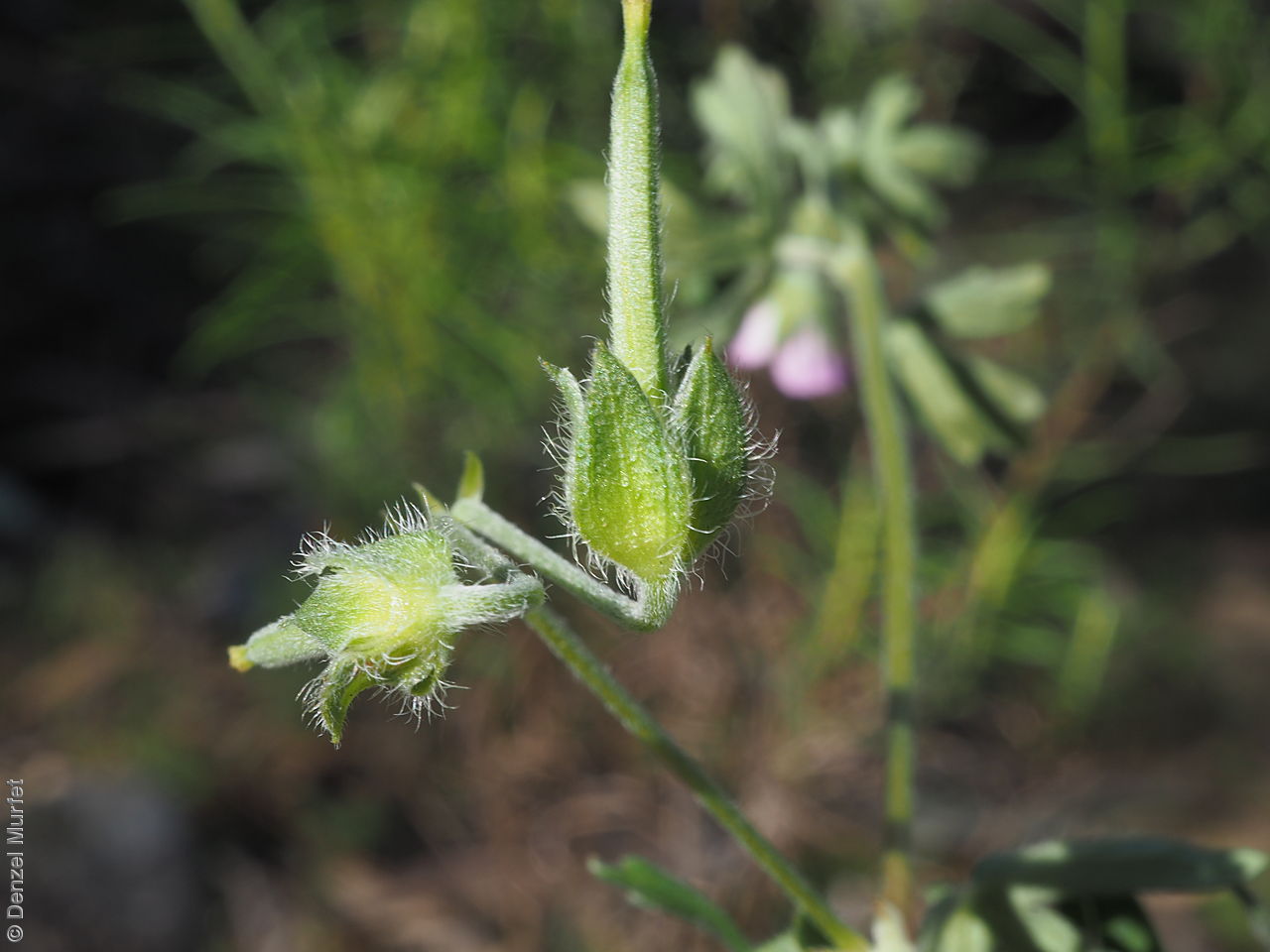
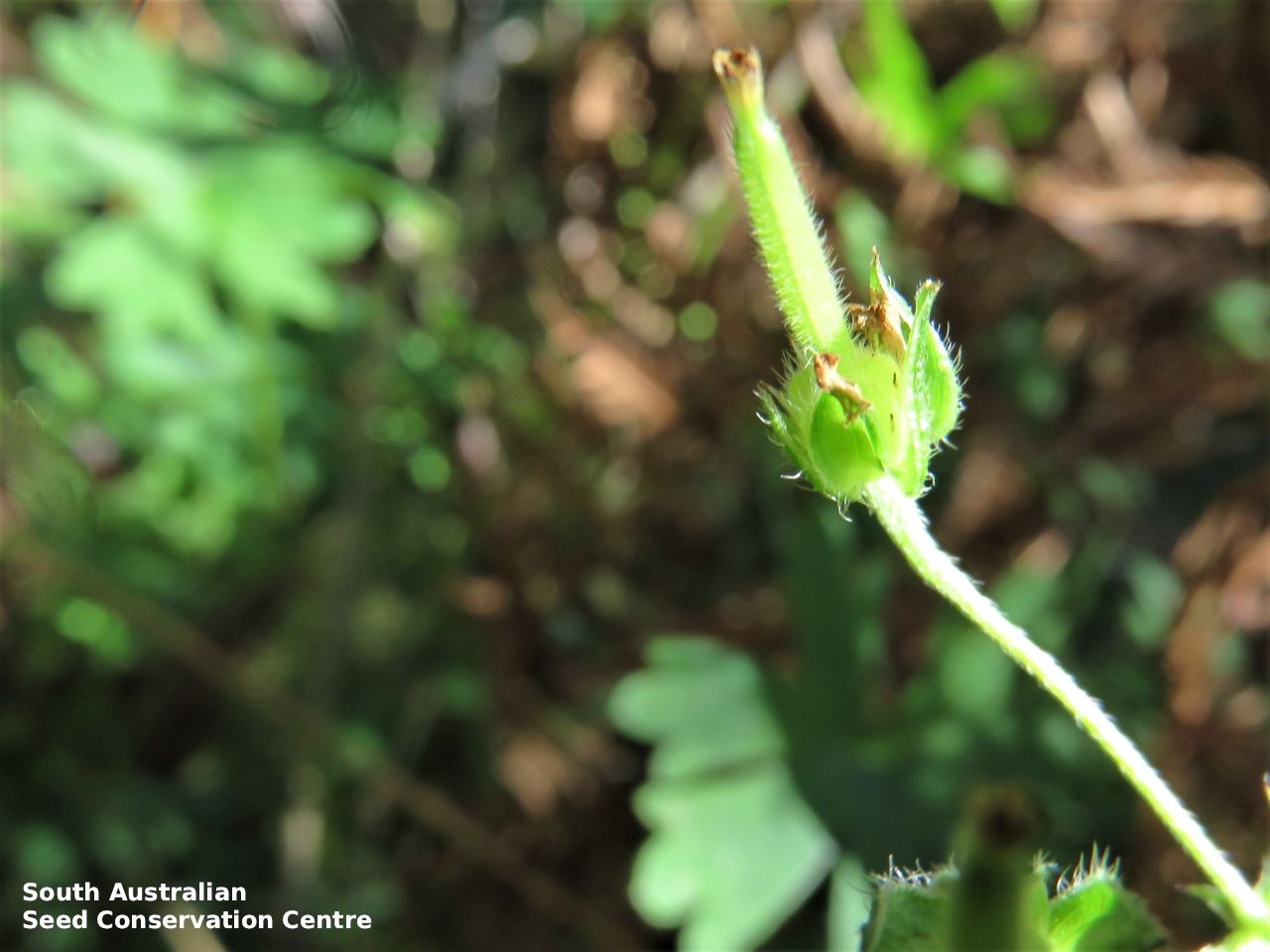


Botanical art
Prior names
Geranium sp. Linear segments (K.Preiss 128), partly
Geranium pilosum, partly
Geranium pilosum var. retrorsum
Geranium australe
Geranium pilosum var. australe (Nees)Ostenf.
Geranium sp.:
Geranium neesianum
Common names
Grassland Crane's-bill
Grassland Geranium
Etymology
Geranium from the Greek 'geranos' meaning a crane, alluding to the fruit resembling the head and beak of this bird. Retrorsum from the Latin 'retrorsus' meaning turned back or pointing backwards, referring to its petiole and pedicel which have distinctive long backward-pointing to the base (retrorse) hairs.
Distribution and status
Found in southern South Australia growing in grasslands and grassy woodlands. Also found in Western Australia, Queensland, New South Wales, Victoria and Tasmania. Native. Common in South Australia. Uncommon in Queensland. Common in the other States.
Herbarium regions: Flinders Ranges, Eastern, Eyre Peninsula, Northern Lofty, Murray, Yorke Peninsula, Southern Lofty, Kangaroo Island, South Eastern, Green Adelaide
NRM regions: Adelaide and Mount Lofty Ranges, Eyre Peninsula, Kangaroo Island, Northern and Yorke, South Australian Arid Lands, South Australian Murray-Darling Basin, South East
AVH map: SA distribution map (external link)
Plant description
Decumbent to ascending perennial herb with stems to 50 cm long, with sparse to dense, short hairs. Leaves opposite, ovate to orbicular or reniform in outline, to 2 cm long and 3 cm wide, with hairs on both surfaces, deeply 5-7-lobed or dissected, each lobe divided into 3 narrow lobes. Flowers sometimes solitary or usually paired with bright pink to magenta petals. Flowering between June and February. Fruits are brown fruit to 15 mm long with 5 hairy mericarps. Seeds are dark brown-black subglobular seed with small rectangular cells on the surface
Seed collection and propagation
Collect seeds between October and March. Collect matured fruit, those that are turning brown and the mericarps are starting to curl and peeling off the fruit stalk. Place the mericarps in a tray and leave to dry fro 1 to 2 weeks. If only the mericarps are collected, no further cleaning is required and it can be stored as is. Alternatively, you can clean to seed by gently rubber the mericarps with a rubber bung, then use a sieve to separate unwanted material. Store the mericarps/seeds with a desiccant such as dried silica beads or dry rice, in an airtight container in a cool and dry place.